At the end of 2017, Suhee and I moved to Kitakagaya, a nostlagic neighborhood in south Osaka. This photo essay revisits that life, exploring the unique values of a place where some say time stands still.
Friends in the city center tell me that, sometime around the 1970s, time stopped in this neighborhood. Economic growth stopped. Changing trends stopped. Transportation development stopped.

They call it a “Showa era” town, referring to the period in Japan’s history between 1926-1989, during which Emperor Shōwa reigned. There are days when it feels like we might indeed be in a time warp.
Many who live here are economically poor. As an artist and writer, I fit comfortably among them. If the newspapers and investment journals told the story of this neighborhood, there would no doubt be cause for great concern — Poverty! Economic stagnation! Low technology! Stray cats!
Certainly people living in this neighborhood have their struggles, and certainly a lack of money often has something to do with that. But the lifestyle lived here is overwhelmingly one where a good life can be lived with little money.
Economic poverty is highly contextual, and the phrase is tossed around by mainstream economists without context, or worse, in purposefully woeful contexts. Living here has given us the context that is often missing in economic reports. What we found is that in many ways, life in Kitakagaya goes against what is learned in university classrooms, at cocktail parties, and on the news. If anything, this old neighborhood has demonstrated to us that poverty and stagnation as we define them, don’t necessarily have to be bad words, and too, that technological advancement doesn’t always make life better.
There is of course, a good bit of nuance to tease out in that sentiment.
By example, most everyone in this neighborhood still gets around on foot or on a bicycle. That’s one small part of the very low-tech, low-cost, low-carbon footprint approach to life here. It is also likely a key to the health, happiness, and sense of community between people in this place.
Have you ever considered how much a simple bicycle can transform a community? It is hard to fathom just how much the old and beloved contraption called a bicycle can save money, save the environment, and build a better community, all while making you healthier.
The use of bicycles as a primary means of transportation encourages all of the above positive characteristics. When Suhee and I start to take part in this lifestyle fully here, we truly feel a big difference, in our bank account, and in our own well-being.
In Kagaya, rush hour truly takes on a different vibe.
Another seeming oddity. Small, owner-occupied shops specializing in everything from fruit to wrenches, from middle-aged-women’s fashion to fried croquettes are sprinkled around every block. This smallness and diversity exist partly because of the above-mentioned human-powered transportation — bicycles make it easier to find, visit, and build diverse, close-knit blocks in the first place. Yet it is also a sign of a culture—both of government and everyday people—that truly means it when they say local business are important for strong, prosperous communities.
How this culture works is a little bit counter-intuitive for Westerners. We joke about how Japanese love paperwork for instance, and paperwork to us, represents bureaucratic barriers. So surely, starting a business here would require ridiculous amounts of paperwork, fees, and inspections. Except it doesn’t. Here Japan actually makes the United States look like the draconian, bureaucracy-loving, red-tape-spreading, small-business-destroyer.
To be sure, we have had many lessons in Japan about the importance of heavy stacks of paper. Yet miraculously, it is far easier to start a small business here than it is in the West. There is generally less regulation. Startup costs are a fraction of what they are in the states. Many fewer hurdles exist between an individual and their dream of owning a neighborhood micro business. In many ways, it feels like the culture here is set up to help individuals thrive. There are reasons why nearly every urban Japanese neighborhood has dozens or even hundreds of small 10-seat restaurants and pubs, and why a single chef-owner can make a living in such a space. I can’t remember however, seeing any such restaurant in an American city and it’s not for lack of wanting.
Old buildings thrive in their own way here, too.
Spaces with low economic utility that might be torn down or sold to the highest bidder in other places, instead have life as community gardens, art venues, and cooperative workspaces. So begins a list of things not possible in cities as economic engines.
Yet these things are possible here.

That’s a sign of people deciding to value community, relationships, and individual creative agency, more than they value mainstream economic calculations. Of course, the economics are here. In this system, ends must meet. The difference it seems, is that economics are not the primary driver of progress, nor the reason that people do what they do.
In Kitakagaya, there are virtues in the poor, in the slow, in the seemingly inefficient ways; in the merits of a bit of struggle and discomfort, and overall, in a view that there’s little sense messing with a thing that works.
That all seems backwards to Western economists. They love to laugh and point and find ways to calculate the magnitude of the Japanese dilemma. The things they point to, however, are not necessarily the failure of Japanese ways, but more often the failure of Western ways when applied to Japan.
Our experience living in Japan is largely the reverse of this. Instead of applying Western thought to life in Japan, we try to apply old Japanese thought to what has become a global Westernized existence. This way of living of course, was already perfected by Japanese urban residents more than a century ago. Our everyday life then, is mostly an exercise in re-discovering how to live simply in a city.
The first lesson, is in how to accomplish things together with your community, with little means.
Our house in Kitakagaya is 80 years old. Though it has two floors, it is by no means a big house. The building’s footprint is on par with most American single-car garages.
When we moved in, the walls had water damage, mold, and holes in them. “Good thing they’re made of mud and straw! Easy to fix!” I told my wife.
I think she wanted to kill me.
The house was in an unlivable condition at first sight. We spend three months to remodel it ourselves with the help of friends, neighbors, mud and straw from the garden, and a upcycled wood.
The rent is cheap, and much of the material — old wood from homes that had been take apart — is donated by the real estate company who owns much of the neighborhood. That real estate company also happens to have a Creative Foundation that supports local artists in the neighborhood — something I would never have believed before living here.

After our DIY remodel, the tiny house is more beautiful and livable. Yet it still has no shower, no hot water, no washing machine, no air conditioning, and no heater.
The building is sweltering in the summer and freezing in the winter. So too, the foundation shakes with the energy of a small earthquake dozens of times a day, as trucks topped with large shipping containers, tractors, and steel girders rumble between the industrial areas to our west, and the city center to the north.
The rumbling we never get used to, but the absence of a shower is surprisingly easy to cope with.
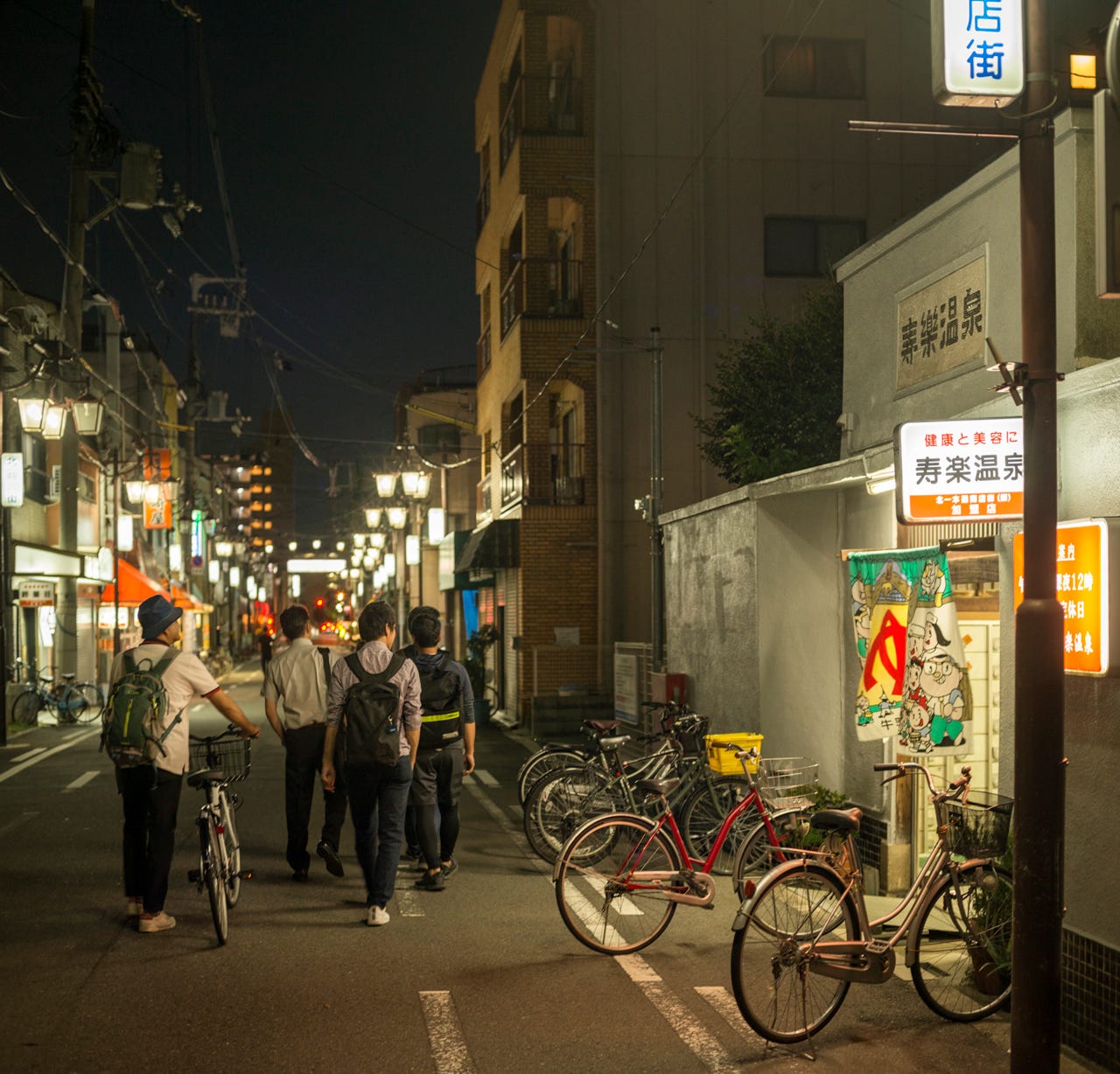
Like most Japanese neighborhoods built before the 1970s, Kitakagaya has a public bath house or sento. This sento is where the majority of households would traditionally bathe, de-stress, and socialize in years past.
As we are living in the past, our neighborhood still has one. It exists however, only by chance, and with the support of a local hospital who keeps it running for the health and well-being of the community.
I had no concept of a sento before I came to Japan, yet it has become one of my favorite ways to spend an hour before sleeping. Especially in the winter. If you are curious why, you can read an illustrated story about these bath houses.
Twenty minutes up the subway line however, things are different for folks in the city center. They certainly do not have the same hardships as we do here. They must have other ones though, because I tend to notice my neighbors laughing and smiling far more often than the people walking the streets of Umeda.
Maybe the difference for the office workers is not so much a matter of the material things as it is a matter of time. That is, time can’t be allowed to stop for them, like it can here in Kitakagaya.
Admittedly, I don’t guess this.

A decade ago, the walls of a Silicon Valley cubicle were my environment until late at night most days. I still remember how time wasn’t allowed to stop there — in that cubicle, or anywhere else in the valley. Everything needed to keep rushing ahead at increasing speed; more innovation, more investment, more profit, more talking, more ideas, more advancement, more stuff.
But quickness and efficiency are typically not valued here in Kitakagaya like they are in Osaka’s city center. Certainly not like they are in Silicon Valley. With few exceptions, slowness and a certain brand of inefficiency are part of life here.
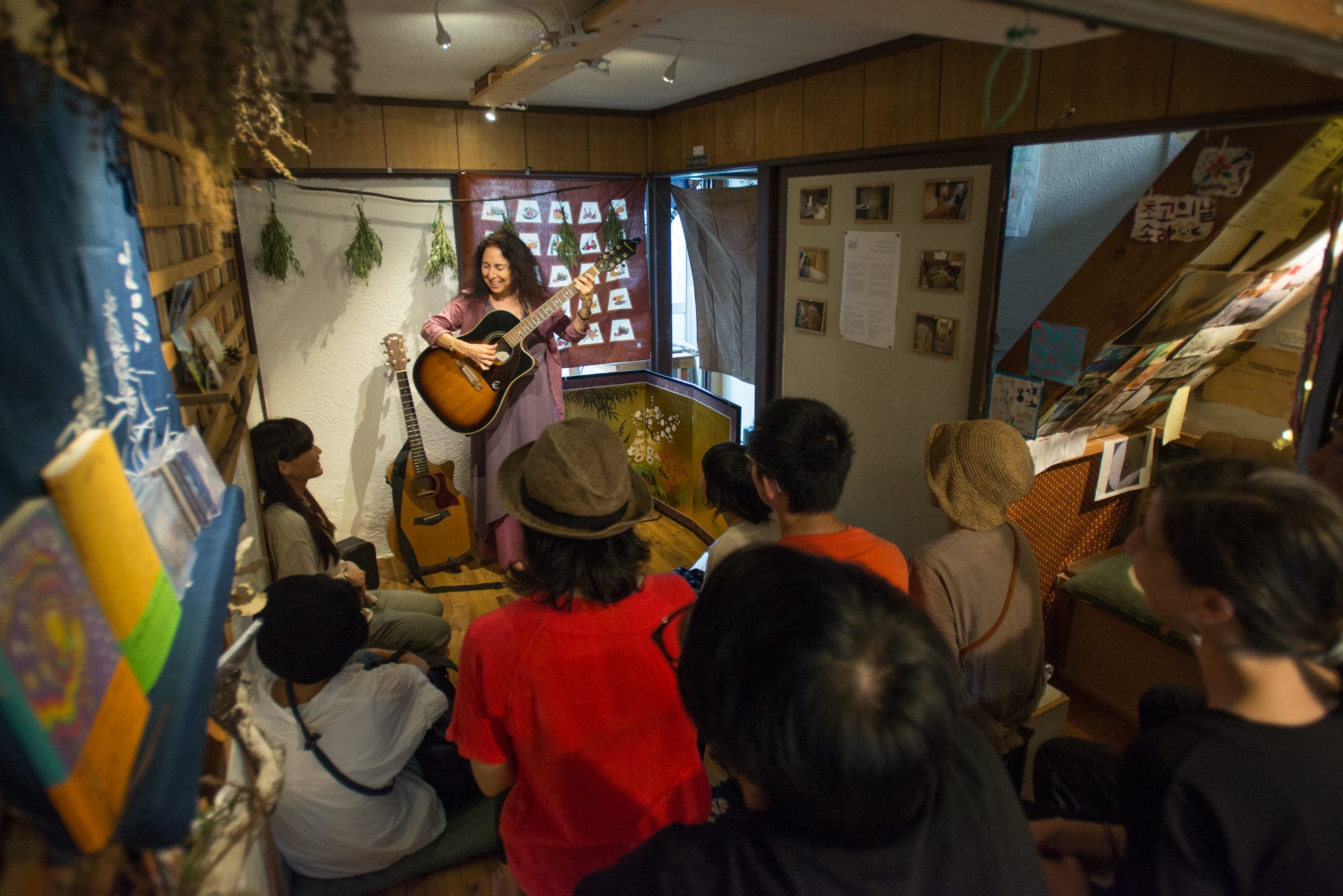
In this way, Kitakagaya and the innumerable old neighborhoods like it in Japan and throughout the world, aren’t so much places as they are ways of being.
Slowness and a notable apathy toward material wealth are part of the way of being here. This way of being allows our tiny urban “pocket farm” and our community cafe to be built and sustained. It also still allows well over a hundred tiny local businesses within a few minute’s walk of our old place to do the same.
But how?
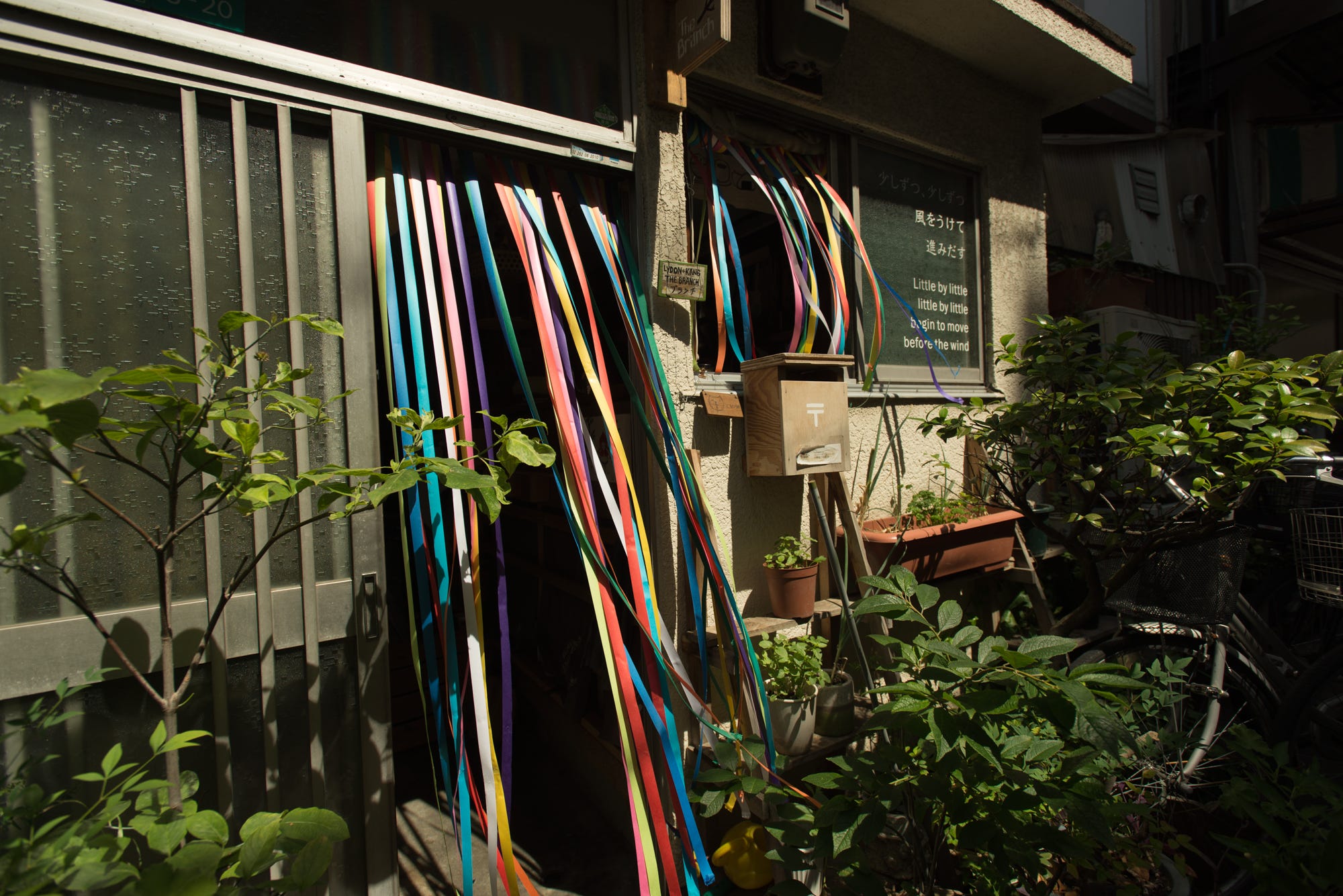
A simple answer can be found in a common refrain heard in this neighborhood:
“If I was aiming at money, this (cafe, farm, workshop, etc…) could not exist.”
This may sound like nonsense. It makes perfect sense however, to those who live here. The meaning of one’s life and work has far more value than what is measured by coin, minute, or asset. It is understood here, that in pursuing a life of efficiency, speed, and monetary profit, one must variously depart from the many other possible forms of wealth. So too, that moving the opposite direction of money may offer more interesting dividends.
So while in a physical sense, Kitakagya is made of numerous bicycle-only alleys, wood-and-soil homes, small-scale factories, artist studios, and tiny urban gardens, it is only by the mindsets of the people here that we find the essence of how a neighborhood like this is built, sustained, and evolves, in its own way.
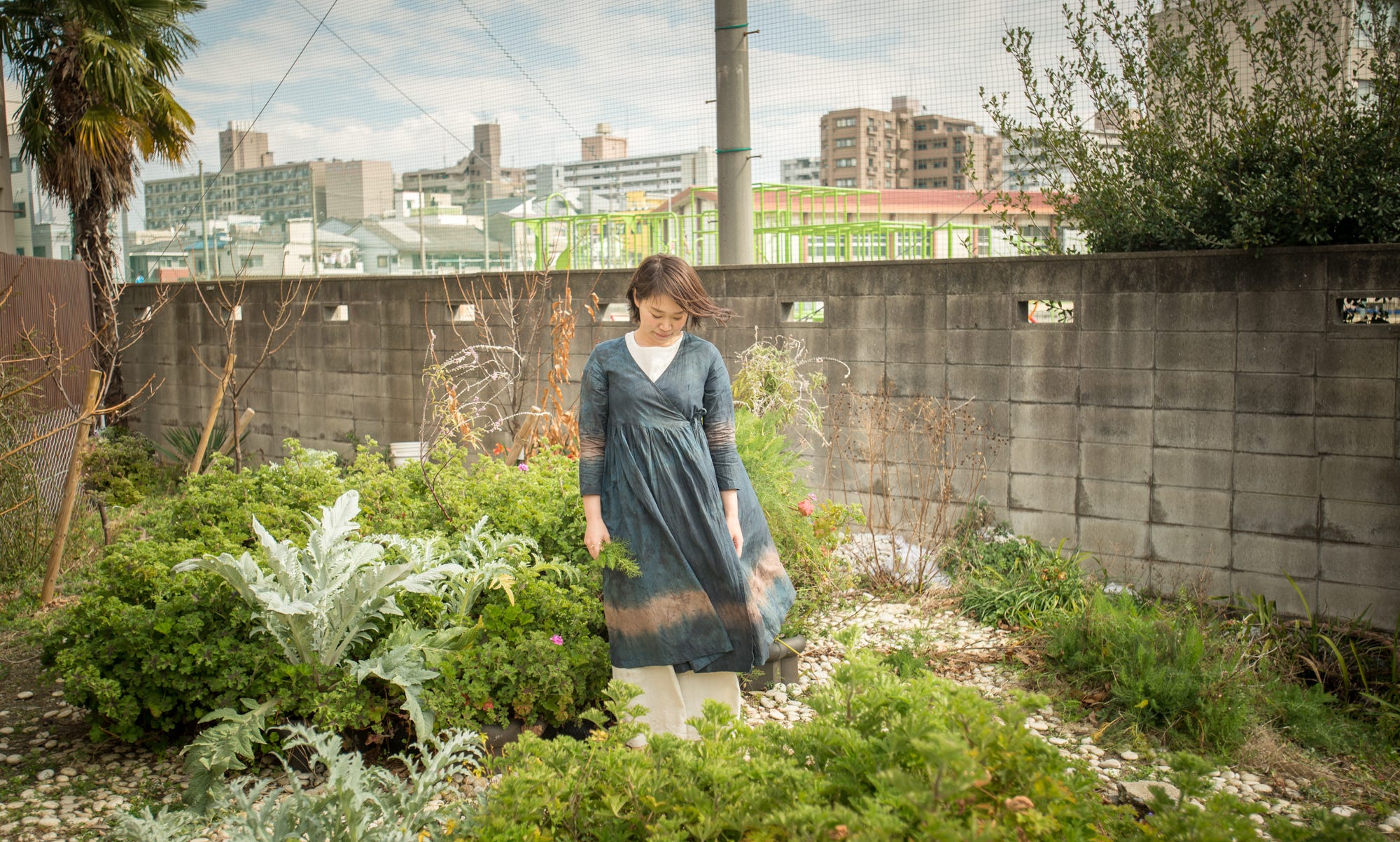
Without the mindset of people who value and support the small, the honest, and the slow, none of this neighborhood could exist as it does. Without them, there would be no artist studios, no urban farms, no handmade glasses shops, no ten-seat sushi restaurants.
There was a decision made at some point, in the minds of certain people, that knowing these other forms of wealth is more interesting, more beneficial, or more important. Once a decision like that is made in earnest, we start to see new kinds of dividends. Once we experience these dividends, it then becomes somewhat difficult to praise the value of a coin in exactly the same way.
Value shifts, as more invaluable moments are experienced.

The people in the city center say that time stopped in this neighborhood. In reality, time did not stop; it just moves on a different trajectory here, where the value of each moment is revealed in ways beyond calculation.
Living in Kitakagaya has taught me to appreciate the beauty of a slower, community-focused life. What incalculable moments add value to your own life? Perhaps, in acknowledging them, we can all find truly richer ways of being.
Thanks for reading The Possible City. I’m Patrick, and each week I write a short like the one you just read. I’m also an arts editor at The Nature of Cities, and director of City as Nature, where I imagine more equitable, resilient, regenerative cities through art.
If you enjoyed this essay, please subscribe and share it with others.
Have thoughts, ideas, or inspirations related to this article? Start or join the conversation thread at the end of each story, or send me a note.








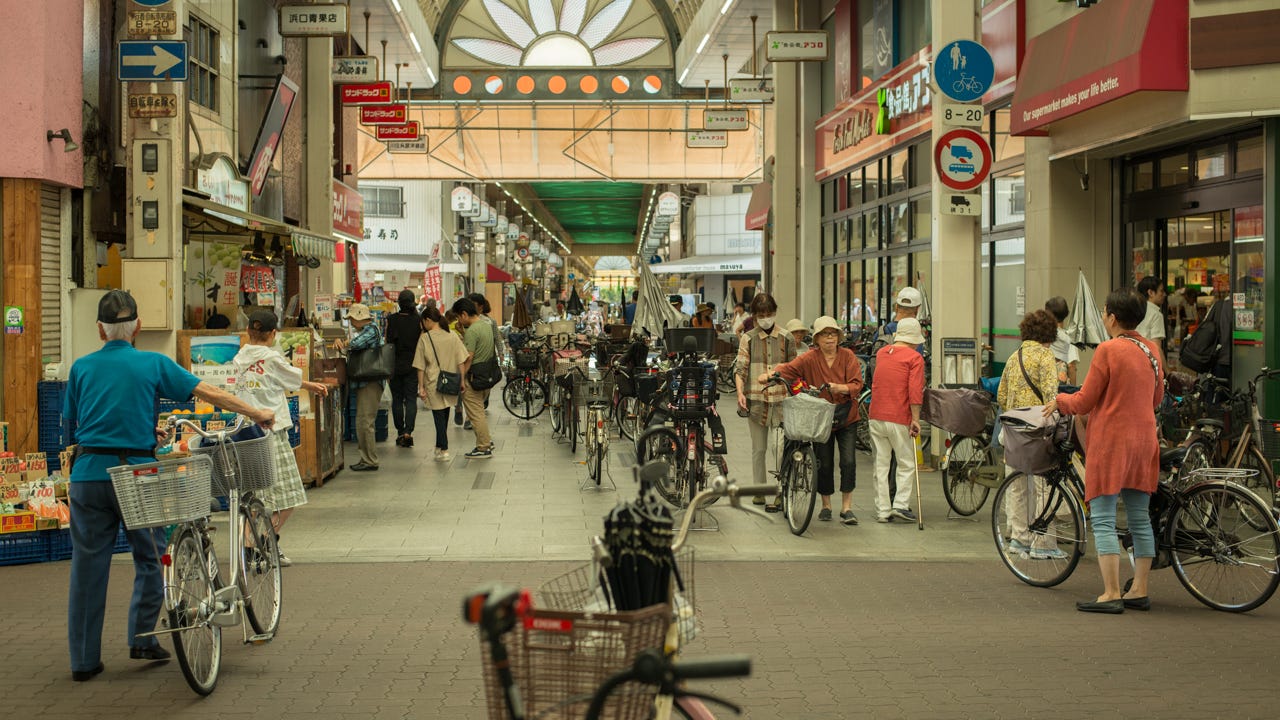


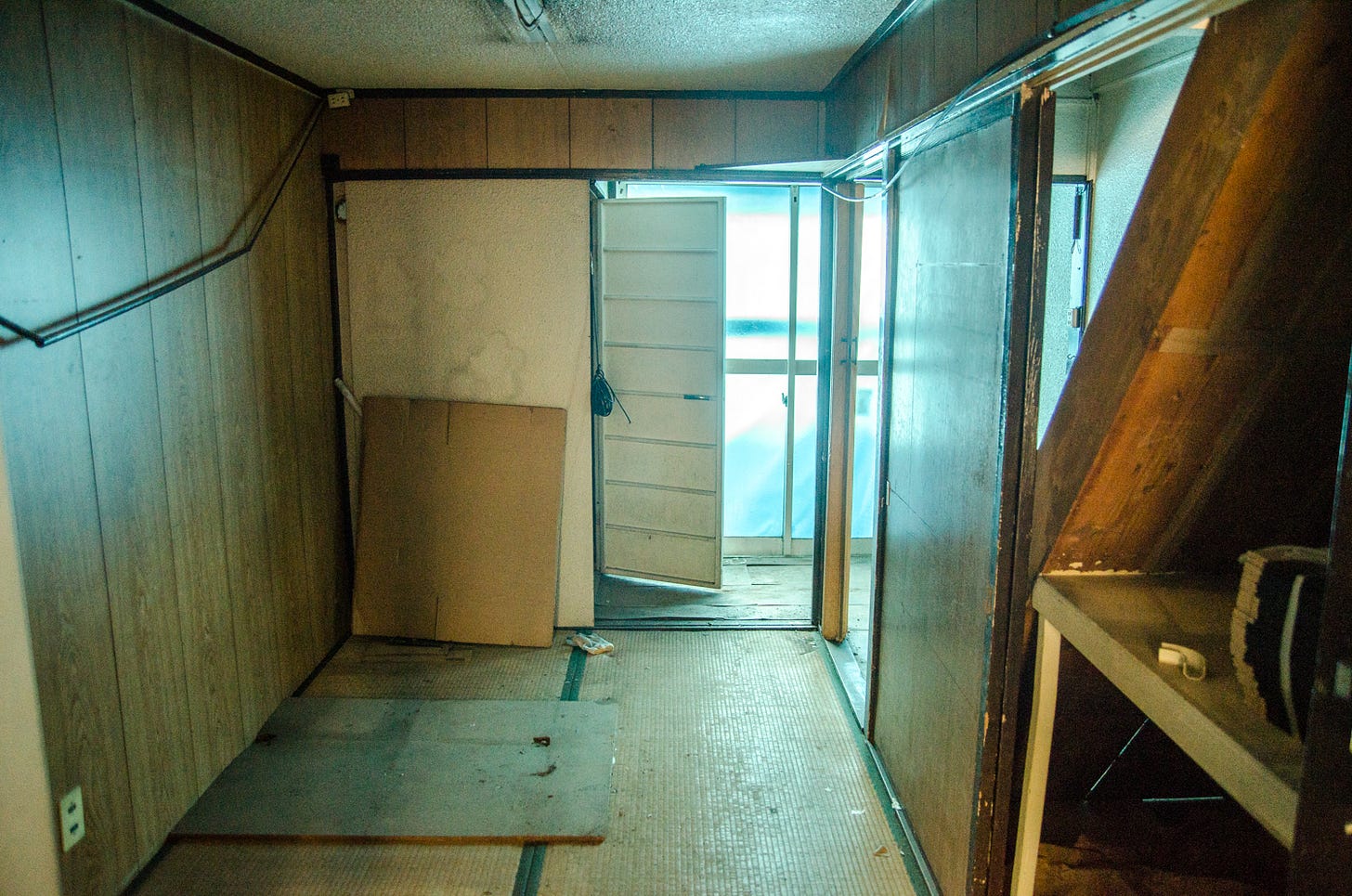

I’m new to your writing but, at 70 now I have come to understand that ‘poor’ in monetary terms is a false measurement. To be poor in spirit & awareness of life & nature & books is the true poverty. I look forward to more of your work. Thank you 🌼
Thank you for posting this beautiful essay. I lived in rural Japan for a few years after college, and this reminded me of my time there (although my apartment was a bit more modern). Unfortunately, as a twenty-something year-old I couldn't fully appreciate the slower and simpler lifestyle back then and often wished I lived in the city, but now that I'm in my late thirties and live in the Bay Area, I really miss a lot about that time - the low cost of living, the rich social circle I shared with both other expats and the local Japanese, and the attention paid to small details and enhancing ordinary life that is so missing in the US and so valued in Japan. And most definitely the small cafes and pubs, and the sentos/onsens!